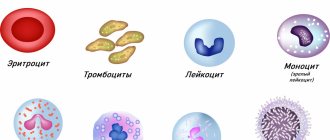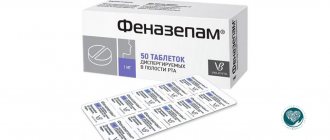BLOOD PRESERVATION
(lat. conservare store, preserve) - methods of storing blood outside the body in a state of its biological and functional usefulness. When canned, blood does not lose its sterility and liquid properties for a certain period of time, which allows it to be prepared and used for transfusion with treatment. purpose.
The Russian scientist V.V. Sutugin first expressed the idea of K. to. in 1865 with the aim of its subsequent use in war trauma. In 1867
B. Rautenberg proposed preventing blood clotting by adding sodium carbonate. Systematic study of the problem of blood clots in the USSR began in 1926 in Moscow, at the world's first Research Institute of Hematology and Blood Transfusion. A great contribution to the development of this problem was made by D. N. Belenkiy, S. I. Spasokukotsky, A. A. Bagdasarov, S. D. Balakhovsky, A. N. Filatov, S. E. Severin, F. R. Vinograd-Finkel , P. M. Maksimov and many others.
In the 30s for K., they began to use TsIPK liquid - 5% citrate solution for a small dilution (1:9) and the glucose citrate preservative TsIPK No. 1.
By 1940, in the USSR the main tasks of the problem of K. to. were resolved and treatment was established. the effectiveness of such blood, which made it possible to widely introduce its mass procurement into practice. In the period 1941 - 1945. methods were developed to prevent bacterial contamination of blood during its mass procurement and storage, as well as new preservative media with sodium citrate and antiseptics. This significantly improved the quality of blood therapy and reduced the risk of blood transfusion complications.
In subsequent years, theoretical and practical research continued, aimed at extending the shelf life of blood at temperatures above and below 0° - in liquid and frozen states.
Factors affecting blood composition
When conducting laboratory blood tests, it is necessary to strictly observe the conditions for collecting biological samples, as well as take measures to counteract the degradation of the resulting materials and the active substance contained in them.
Every medical professional should know and warn the patient that in the blood:
- immediately after eating, the concentration of hormones and some other biological substances may increase significantly;
- A number of components are characterized by daily (circadian) level fluctuations;
- taking most drugs in one way or another affects the concentration of the substance being determined;
- The patient's position (horizontal or vertical) or exposure to physical activity immediately before taking samples for analysis can affect the level of the components being tested, increasing or decreasing their concentration by more than 10%.
Laboratory centrifuge S2004 | It is preferable to collect blood samples intended for further research directly into centrifuge tubes. The preparation of containers (washing, drying, adding enzyme inhibitors or coagulants) must be carried out by one specialist. The collected unadulterated blood is left to settle, while the modified blood is placed in a multifunctional benchtop centrifuge, where the serum or plasma is separated. The resulting research material is bottled into smaller plastic or glass containers. The number of sample tubes must be equal to or greater than the number of types of tests to be performed. |
When selecting biological material, it is necessary to take into account that the secretion of many substances in the body occurs with a certain cyclicity, which can range from several minutes to a day. It is incorrect to determine test results without taking into account the time factor and the actual physiological state of the body. If the study of the material does not involve determining the circadian rhythm of biological activity, then capillary or venous blood should be collected in the morning on an empty stomach. The patient should be at rest.
Image of the hemolysis process | The process of blood sampling itself must be carried out in such a way that hemolysis is excluded, which occurs during prolonged venous stagnation, the creation of excessive vacuum in the syringe, the ingress of detergents or water into the needle channel, and exposure to low and high temperatures. |
How are various wastes disposed of in medical institutions?
Class A waste is collected in plastic bags and then sent to a solid waste landfill for destruction or recycled.
Class B waste is packaged in bags and containers. Disposal occurs only after disinfection in steam-formalline cabinets, steam chambers, etc. The choice of disinfection methods depends on the profile of the medical organization and the availability of disinfection installations. After this, the waste is either burned or taken to landfills. According to clause 5.7. SanPin, class B liquid waste (vomit, urine, feces) and similar biological fluids of tuberculosis patients can be discharged without prior disinfection into the centralized sewerage system. In the absence of a centralized sewerage system, disinfection is carried out using a chemical or physical method.
Class B waste is always pre-disinfected. They are collected in special disposable bags and containers with a tight-fitting lid. Storage and transportation of non-disinfected Class B waste is not permitted. For disinfection, high temperature treatment, disinfectant solutions, special equipment, etc. are used.
Class G waste is collected in sealed containers and delivered to a specialized production facility, where it is disinfected and then sent for destruction or burial. Transportation of such waste is carried out only by specialized companies that have a license for this type of activity.
Question answer
Is testing for tumor markers harmful to health?
Class D waste is dismantled before disposal, checked for radiation levels, and is temporarily stored in metal barrels at special sites. After radioisotopes decay, they are disposed of in solid waste landfills.
Isolation of plasma or serum
Isolated plasma (top) | Whole blood, both venous and capillary, is used in biochemical studies (determining the concentration of electrolytes in erythrocytes, glucose levels and ACR indicators), as well as hematology (standard clinical analysis, malaria testing, hematocrit and LE cell testing). Radioimmune and enzyme immunoassay methods involve the isolation of plasma or serum. There is no consensus among experts as to whether serum or plasma is better suited for analysis. For example, for biochemical studies, venous blood serum is often taken. The arguments “for” in such cases are the fact that the steroids in this case are extracted more easily and completely. It is also noted that plasma often forms an emulsion with organic solvents, and when thawing after freezing, fibrin flakes may appear in it. |
Also, when choosing a specific material, the following objective factors should be taken into account:
- When isolating serum, there is a danger that during the process of blood settling, proteolytic enzymes are actively released from erythrocytes, which can destroy the substance being determined, as well as damage its labeled analogue during incubation. Taking into account this point, it is recommended to prepare plasma to determine the concentration of protein compounds.
- Plasma collection often involves the use of citrate or heparin. The first has a significant effect on the acidity of the environment, to which certain substances are very sensitive, and the second prevents the binding of the antigen to the antibody. To avoid negative effects, it is worth adding 50 mg of ethylenediaminetetraacetic acid per 5 ml of blood to the dry tube in which centrifugation will be performed. Immediately after collection, the blood is mixed with EDTA to obtain a mixture in a ratio of 1:100. The acid is a blocker of proteolytic enzymes, a weak anticoagulant, and is also part of various buffer mixtures.
Blood preservation at temperatures above 0°
Preservation of blood at temperatures above 0° is carried out with the aim of: 1) stabilizing blood in vitro in a liquid state, i.e., protecting it from coagulation, binding or destruction of any of its components; 2) preserve function, activity and morphol. the structure of blood cells, making it possible to maintain metabolic processes in them and circulation in the circulatory system of the body at a normal level or close to normal; 3) maintain the ability to survive in the recipient’s body after transfusion; 4) keep the blood sterile.
The most widely used stabilizers are citric acid and sodium citrate. Their mechanism of action is to bind calcium ions, which prevents blood clotting.
The disodium salt of ethylenediaminetetraacetate - EDTANa2 - also binds calcium ions. However, at the same time it causes the binding of potassium and magnesium ions and early hemolysis of preserved blood, which has limited its use. Heparin (50-60 mg per 1 liter of blood) is used to stabilize blood. arr. in artificial blood circulation machines. Its disadvantage is the limitation of stabilization periods (up to 24 hours) and the formation of clots due to inactivation of heparin, and therefore it is used only for short-term (several hours) C. to.
Blood stabilization can be achieved without adding chemicals. substances - by passing blood through a column with cation exchange resins. Based on this principle, in 1969, at the Belarusian Research Institute of Blood Transfusion, E. D. Buglov developed the drug M-1-cellulose phosphate.
For K. to., in addition to stabilization, the preservation of morphol, the integrity of erythrocytes and their functions, usefulness is important. This requires a constant supply of the main nutritional substrate for these cells—glucose—as well as the means that ensure its utilization—enzymes and coenzymes.
A direct connection has been established between the oxygen transport function of erythrocytes and the content of 2,3-diphosphoglycerate (2,3-DPG), its important role in regulating the affinity of hemoglobin for oxygen and in the process of releasing oxygen to tissues: at low concentrations in erythrocytes, 2,3-DPG affinity hemoglobin to oxygen is increased, while the dissociation of oxyhemoglobin and the transfer of oxygen to tissues is difficult; at a high concentration of 2.3-DPG, the bonds of hemoglobin with oxygen are weakened, oxyhemoglobin dissociates faster and tissues easily extract oxygen from its complex with hemoglobin. It is known that ATP, in addition to participating in the formation of 2,3-DPG, can also be associated with hemoglobin and influence the process of oxygen delivery to tissues; Therefore, a correlation between the oxygen transport function of erythrocytes and the content of 2.3-DPG and ATP is assumed. Thus, along with stabilization, the main requirement for hemopreservatives is to replenish the lack of ATP and 2,3-DPG. The introduction of glucose into the citrate solution for red blood cells made it possible to prolong the synthesis of ATP and cover the energy needs of erythrocytes. In addition, an important point was to bring the pH of the preservative solutions to 4.5-5.1 (at the same time, red blood cells consume glucose more slowly), which delays the onset of hemolysis and increases the post-transfusion survival of red blood cells.
Since 1947, acid glucose citrate solutions have gained recognition in many countries. They allow you to store canned blood at t 4-8 up to 21 days with a post-transfusion survival rate of 70% of transfused red blood cells, which is the international standard. In the USSR, solutions TsOLIPK-76, LIPC-L-6 are used, in the USA and other countries - solutions ACD.
Composition of the preservative solution TsOLIPK-76: sodium citrate citrate - 2 g, glucose - 3 g, chloramphenicol - 0.015 g, bidistilled water up to 100 ml. Shelf life - up to 2 years.
Composition of hemopreservative LIPC-L-6: sodium citrate citrate - 2.5 g, glucose - 3 g, sodium sulfacyl - 0.5 g, neutral trypaflavin - 0.025 g, bidistilled water up to 100 ml. Shelf life: up to 7 days.
Acid glucose citrate solutions have become the basis for the creation of new hemopreservatives, for example, citroglucophosphate containing 1 g of citric acid, 0.75 g of trisodium phosphate, 3 g of glucose, up to 100 ml of distilled water, normal solution of caustic soda to pH 5.7 (20 ml of solution per 80 ml of blood), which allows to extend the safety of the function. the usefulness of red blood cells. Abroad, a citrate-phosphate solution with dextrose is used - CPV.
The inclusion of metabolites of carbohydrate-phosphorus metabolism (adenine, inosine, pyruvate, etc.) in hemopreservatives has opened up a new perspective in K. to. - the possibility of restoration (“rejuvenation”) of preserved erythrocytes after the maximum permissible period (21 days) of storage. Incubation of long-term stored canned erythrocytes with metabolites of carbohydrate-phosphorus metabolism leads to the restoration of their functionality and usefulness lost during storage (content of 2,3-DPG, ATP, P50 and other indicators). Subsequent freezing of the restored red blood cells in liquid nitrogen makes it possible to preserve the “rejuvenated” cells for a long time.
Methods have been developed for obtaining and preserving blood components: red blood cells, platelets, leukocytes and plasma. Preservation of blood cells is of great importance, especially in connection with the increasing use in treatment. the practice of transfusion of individual components instead of whole blood.
Red blood cell mass (see) is the most common transfusion medium. It is obtained by aseptic removal of plasma after sedimentation or centrifugation of preserved blood; in the future it is possible to store conc. red blood cell mass (hematocrit up to 70%) - In the treatment. In practice, washed red blood cells (subjected to repeated aseptic washing with physiological solution) are also used, especially in reactive patients (sensitized, allergic, etc.).
For use in clinical practice of leukocyte and platelet masses, methods for their production have been developed using centrifugation in plastic equipment and colloidal precipitators. Leukocyte mass (see Leukocyte concentrate) persists for up to 24 hours.
Platelet mass (see) is stored in its own plasma at t° 4° for 6-8 hours, and at t° 22° in plastic bags for 72 hours.
Isolation and storage of leukocyte and platelet masses, in addition to plastic equipment, is carried out using special fractionators for automatic aseptic separation of blood into components and obtaining large quantities of these cells from one donor using cytapheresis. (see Plasmapheresis).
Rice. 1. Systems for collecting blood: a - plastic bags (1 - injection needle in a cap; 2 - satellite bottles for analyzing donor blood; 3 - tube between the bags; 4 - fittings for connecting systems for transfusion of blood or its components; 5 - bags with preservative solution; 6 - container for bacteriological research); b - glass bottles (1 - air duct needle; 2 - needle for connecting blood-conducting tubes to the bottle; 3 - plastic tubes for carrying blood into bottles; 4 - bottles with a preservative solution; 5 - injection needle in a cap).
Mass procurement of canned blood and its components is carried out by blood service institutions (blood transfusion stations and departments) according to uniform methodological rules. Blood is preserved. arr. on sterile hemopreservatives 76 and citroglucophosphate produced in factories. Blood collection from donors into glass vials or plastic bags with a hemopreservative is carried out in stationary operating stations and blood transfusion departments or at the place of work of donors, where special teams are sent, equipped with everything necessary for collecting blood. The sterility of blood cells is ensured by the observance of strict aseptic measures when procuring it from donors, the use of sterilized hemopreservatives (in hermetically sealed bottles or plastic bags) and closed sterile systems for blood collection (Fig. 1). The sterility and quality of canned blood is strictly controlled by selective bacteria, cultures performed at stations and in blood transfusion departments, as well as macroscopic assessment in laying down. institutions before release for transfusion.
Preparing blood for laboratory tests
The collected blood sample must be transported to the laboratory and processed or analyzed as quickly as possible. Prolonged exposure of serum to red blood cells can lead to changes in the concentration of components and, accordingly, distortion of the results. It is also necessary to take into account that the biological half-life of a number of test substances when the sample is exposed to room temperature is extremely short.
Medical centrifuge PrO-Hospital GP6 | At the first stage of processing, using a dry, clean glass rod, the blood clot is carefully separated from the walls of the test tube and the container is weighed. The sample is then placed in a hospital-grade centrifuge operating at an appropriate speed range. In most cases, the processing of blood samples in preparation for research is recommended to be carried out at a temperature of +4°C, a rotation speed of 1500 - 3000 rpm, overloads from 500 to 1000g for 15-20 minutes. Higher rotor speed may result in hemolysis of plasma or serum. |
The isolated serum or plasma should be promptly separated from other blood elements, and then the tubes should be tightly capped. Damaged samples must be disposed of.
Blood preservation at temperatures below 0°
Long-term storage of blood cells and plasma is possible only at subzero temperatures. In this case, the cells are preserved in an anabiotic state - with suppression of metabolism, but maintaining the activity of enzyme systems and cell viability.
Plasma is frozen and stored at t° -30°. The solution to the problem of freezing red blood cells was helped by the establishment of the fact that ultra-fast cooling of blood (100° per second) can occur almost without crystalline solidification (it was possible to freeze and preserve small volumes of red blood cells in a thin layer), and the discovery of the cryoprotective property of glycerin, which made it possible to preserve them when mixed with red blood cells in a frozen state. A. D. Belyakov et al. in 1956 and F.R. Winograd-Finkel et al., in 1958, developed a method for preserving blood cellular elements in a supercooled state at temperatures below 0° (from -8 to -16°) without crystal formation.
In practice, two methods of cryopreservation of erythrocytes are used: ultra-fast freezing in liquid nitrogen (-196°) with low (15%) concentrations of glycerol or slow freezing with a high (30-50%) concentration of glycerol at moderate temperatures (-40, -80°) in the air chamber of electric refrigerators. These methods make it possible to preserve 85-95% of red blood cells intact for a long time (years).
The method of ultra-rapid freezing of red blood cells consists of isolating red blood cells from whole donor blood after centrifugation under strict aseptic conditions and mixing them with a sterile enclosing solution containing glycerin. The mixture is transferred to an aluminum corrugated container or a special plastic bag and exposed for 2 minutes. freezing by immersion in a bath of liquid nitrogen, after which it is transferred to a special bunker or chamber also with liquid nitrogen for subsequent long-term storage. To use frozen red blood cells, containers or bags are removed from liquid nitrogen storage and thawed by placing for 25 seconds. in a bath with water (t° 45°). After thawing, red blood cells are washed from glycerol with mannitol-salt, glucose-mannitol, saline and other solutions with successively decreasing hyperosmia to isosmia. To wash erythrocytes, use the method of sequential centrifugation and drainage of the supernatant or automatic fractionators of various types for aseptic washing of thawed erythrocytes in a closed system. Washed red blood cells are poured into an equal volume of isotonic solutions (sucrose glucose phosphate, saline, etc.), after which they are suitable for transfusion within 24 hours.
The method of slow freezing at moderate temperatures has its advantages - no liquid nitrogen equipment is required, since electric refrigerators are used. Glycerol is widely used as an endocellular cryophylactic in high concentrations (40%), although this complicates the methods of washing it after thawing red blood cells.
For cryopreservation of leukocytes and platelets, enclosing solutions containing cryoprevention agents of endocellular (glycerol, dimethyl sulfoxide, dimethylacetamide) or exocellular action (polyvinylpyrrolidone) in combination with carbohydrate solutions (sucrose, glucose, ascorbic acid) were selected. Cells are frozen in specially designed devices that allow them to be cooled according to a given program. After programmatic freezing and thawing of leukocytes, 75 to 92% of recovered cells can be obtained.
There is a method for dividing the leukocyte mass into lymphocytes and granulocytes. Thawed lymphocytes are intended for typing and transfusion to patients with suppressed immunol activity; granulocytes can be used in the treatment of patients with septicemia, agranulocytosis, etc.
Rice. 2. General view of a special compartment (bank) for long-term storage of frozen blood.
Freezing, storage, thawing and washing of red blood cells and other blood cells are carried out in specially organized departments (banks) for long-term storage of frozen blood at blood service institutions (Fig. 2).
Wedge, experience confirms the effectiveness of transfusions of a suspension of thawed red blood cells in the treatment of acute blood loss, anemia of various etiologies, during open heart surgery and when using an artificial kidney apparatus. The advantages of transfusions of thawed, washed red blood cells are their better tolerability (without post-transfusion reactions) by patients who are sensitized or allergic to previous blood transfusions or medications. They do not contain immunoaggressive cellular (leukocytes and platelets) and protein components of plasma, which are the main cause of reactions during repeated transfusions (see Blood transfusion).
The method of cryopreservation of blood, in addition to ensuring long-term storage, creating reserves of blood of rare groups, reduces the risk of infection with viral hepatitis B. It also makes it possible to widely use autotransfusions by preliminary accumulation of blood from a given patient and its long-term storage in a frozen state until the time of surgery or the need for transfusions ( see Autohemotransfusion).
Storing blood, plasma or serum samples
In most cases, it is considered acceptable to use material stored at room temperature for no more than 8 hours for analysis. When samples are cooled to a temperature of +4°C, they can be kept for a week. If biological material is subject to long-term storage, then it must be deep frozen to a temperature of -20°C. This will allow analysis for cancer markers, cholesterol, urea, and many hormones even after several months.
Return to list







